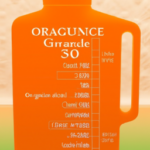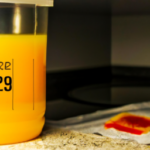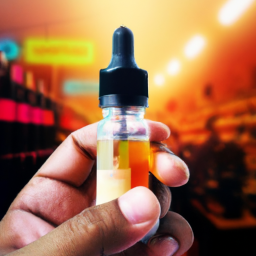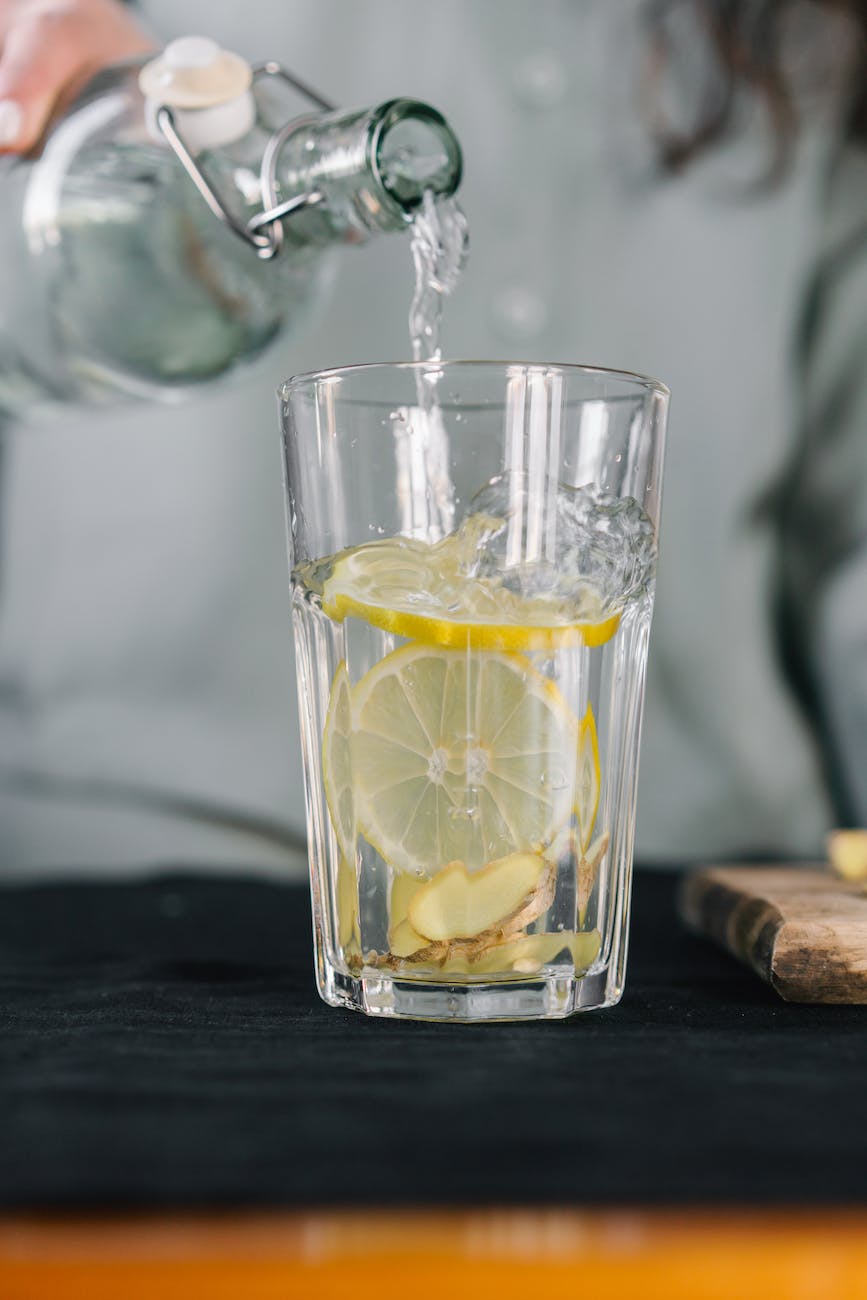Juice
How Long Fresh Orange Juice Last In Fridge

As a person who delights in starting my day with a cool glass of orange juice, I frequently ponder the shelf life of this beverage when kept in the refrigerator. Freshly squeezed orange juice offers both delectable taste and health benefits, yet it is prone to rapid spoilage if not correctly preserved.
In this article, I will explore the factors that determine the shelf life of fresh orange juice, how to store it correctly, and how to tell if it has gone bad. The shelf life of fresh orange juice depends on several factors, including the quality of the oranges, the method of extraction, and the storage conditions.
If the oranges are ripe and free of mold and rot, the juice will have a longer shelf life. The method of extraction also plays a role; juice that is extracted using a cold press machine will last longer than juice that is squeezed with a handheld juicer. Proper storage is crucial to extending the shelf life of fresh orange juice.
By understanding these factors, we can ensure that our orange juice stays fresh and delicious for as long as possible.
Key Takeaways
- Fresh orange juice lasts for about 2-3 days in the fridge.
- To extend the shelf life, transfer the juice to an airtight container, store in the coldest part of the fridge, avoid exposure to light and air, and consider adding lemon juice or freezing in ice cube trays.
- Preservatives such as ascorbic acid, citric acid, and potassium sorbate can also be added to prevent spoilage, bacteria growth, and deterioration.
- Signs of spoilage include a cloudy appearance, sour or musty odor, and off taste.
What Determines the Shelf Life of Fresh Orange Juice
You’re probably wondering how long your fresh orange juice will last in the fridge, and the answer lies in what determines its shelf life. The shelf life of fresh orange juice is dependent on several factors affecting its quality, including the storage conditions.
The primary factors include the type of oranges used, the processing method, and the storage temperature. The type of oranges used in making the juice can affect its shelf life. Some oranges have a higher acidity level, which can help preserve the juice for a longer period.
The processing method can also impact the shelf life of the juice. Freshly squeezed orange juice has a shorter shelf life compared to pasteurized orange juice. Finally, the storage temperature can affect the shelf life of the juice. Storing the juice at the right temperature can help maintain its freshness for a longer period.
Now that we’ve established the factors affecting the shelf life of fresh orange juice, let’s talk about how to store it properly.
How to Store Fresh Orange Juice
To keep your OJ tasting its best, make sure to store it properly in the refrigerator. The first tip is to transfer the fresh orange juice from its original container to an airtight container. This will prevent any air from seeping in and oxidizing the juice, which can cause it to spoil faster.
Additionally, it’s best to store the container in the coldest part of the fridge, which is usually the back of the bottom shelf. This will ensure that the juice stays fresh for longer. Another important factor to consider when storing fresh orange juice is its nutritional value.
Orange juice is a great source of vitamin C, potassium, and other essential nutrients. However, exposure to light and air can degrade these nutrients over time, which can reduce the health benefits of the juice. By following proper storing techniques, you can preserve the nutritional value of the juice and enjoy its full benefits.
Now, let’s discuss the signs that fresh orange juice has gone bad.
Signs that Fresh Orange Juice has Gone Bad
When it comes to fresh orange juice, it’s important to know the signs that it has gone bad. As someone who enjoys starting my day with a glass of orange juice, I pay attention to its appearance, smell, and taste.
If the juice looks cloudy, smells sour, or tastes off, it’s time to toss it out.
Appearance
After a few days in the fridge, fresh orange juice may start to look cloudy or separate. This change in appearance is due to the natural settling of pulp and other solids that are present in the juice. The color intensity may also become duller as the juice begins to lose its freshness.
Additionally, sediments may begin to form at the bottom of the container, which is a sign that the juice is no longer at its peak quality. When it comes to determining the freshness of orange juice, appearance is only one factor to consider.
The next step is to evaluate the smell of the juice. A stale or musty odor is a clear indication that the juice has gone bad and should be discarded.
Smell
Take a whiff of the orange juice before drinking it to ensure that it doesn’t have a stale or musty odor, which would mean it’s no longer good. The smell of orange juice is one of the most important indicators of its freshness. If the juice smells sour or rotten, then it’s time to throw it out.
To keep your orange juice smelling fresh, there are a few ways to freshen up the smell of your fridge. One way is to clean your fridge regularly with a mixture of water and vinegar. This will help eliminate any unpleasant odors that may be lingering in your fridge.
Another way is to use natural remedies such as placing a bowl of baking soda in your fridge to absorb any odors. Additionally, you can use benefits of aromatherapy by adding a few drops of essential oils such as lemon or lavender to a cotton ball and placing it in your fridge. This will not only help freshen up the smell of your fridge but also create a calming and relaxing environment in your kitchen.
As important as the smell of orange juice is, the taste is equally important.
Taste
You’ll want to savor the delicious flavor of this zesty drink to fully appreciate its tangy notes and refreshing taste.
Fresh orange juice has a unique flavor profile that is both sweet and tart, with hints of acidity that make it a perfect addition to any breakfast or brunch table.
Here are some recipe ideas to make the most of your fresh orange juice:
- Whip up a batch of orange juice pancakes, using fresh juice in the batter for a burst of citrus flavor.
- Mix fresh orange juice with honey and ginger for a refreshing and healthy morning drink.
- Add fresh orange juice to your smoothies for an extra boost of vitamin C and a bright, tangy taste.
- Use fresh orange juice to make a marinade for chicken or fish, adding a touch of sweetness and acidity to your dish.
- Combine fresh orange juice with sparkling water and mint for a light and refreshing mocktail.
Now that you know how to make the most of your fresh orange juice, it’s important to note how long it lasts in the fridge.
How Long Fresh Orange Juice Lasts in the Fridge
When storing fresh orange juice in your fridge, it typically lasts for about 2-3 days before it starts to spoil. This is due to the fact that fresh orange juice contains natural enzymes and bacteria that can cause it to go bad quickly.
However, there are ways to use leftover orange juice before it spoils, such as using it in smoothies, marinades, or salad dressings. If you want to make your fresh orange juice last longer without refrigeration, there are a few techniques you can try.
One of the easiest ways is to add a small amount of lemon juice to the orange juice, as the acidity can help preserve it. Another option is to freeze the orange juice in ice cube trays and use the cubes as needed.
But, if you want to extend the shelf life of fresh orange juice in the fridge, there are a few more steps you can take to keep it fresher for longer.
How to Extend the Shelf Life of Fresh Orange Juice
I’ve found that freezing fresh orange juice is a great way to extend its shelf life. Simply pour the juice into an airtight container and pop it in the freezer.
Another option is to add preservatives, such as citric acid or ascorbic acid, to the juice to prevent spoilage.
Freezing Orange Juice
If you want to make your fresh orange juice last longer, try freezing it in ice cube trays. This is a great way to preserve the juice’s nutritional value while still being able to enjoy it whenever you want.
Here are some creative recipes you can make using frozen orange juice cubes:
- Make a refreshing orange juice slushie by blending frozen orange juice cubes with ice and a little bit of honey.
- Add frozen orange juice cubes to sparkling water or club soda for a fizzy and flavorful drink.
- Use frozen orange juice cubes in marinades for chicken or fish for a tangy and citrusy flavor.
By freezing your orange juice, you can extend its shelf life by several months. However, if you want to avoid freezing your juice, you can also add preservatives to it.
Adding Preservatives
So, freezing orange juice is a great way to extend its shelf life. However, there are also other methods that can be used to keep orange juice fresh. One of these methods is adding preservatives.
Preservatives are substances added to food and drinks to prevent spoilage, bacteria growth, and other forms of deterioration. There are two types of preservatives: natural and synthetic. Natural preservatives are derived from natural sources, such as plants, while synthetic preservatives are chemically created.
Some common types of preservatives used in orange juice include ascorbic acid (vitamin C), citric acid, and potassium sorbate. While adding preservatives can help extend the life of orange juice, it’s important to note that some people prefer to avoid them due to potential health concerns.
Moving forward, it’s important to understand the health benefits of fresh orange juice.
Health Benefits of Fresh Orange Juice
Indulging in a glass of fresh orange juice not only quenches your thirst but also provides a plethora of health benefits. Oranges come in different varieties, and each has its unique nutritional value. For instance, the navel orange is an excellent source of Vitamin C, which is essential in fighting diseases and boosting the immune system.
Moreover, fresh orange juice is rich in flavonoids, which are antioxidants that help in preventing cell damage and reducing the risk of chronic diseases. Research shows that regular consumption of fresh orange juice may lower blood pressure levels, reduce inflammation, and improve heart health.
Additionally, drinking fresh orange juice can help in preventing kidney stones and reducing the risk of developing certain types of cancer. The nutritional content of fresh orange juice makes it an ideal drink for anyone looking to lead a healthy lifestyle.
If you want to enjoy fresh orange juice for longer, there are a few tips you can follow to make it last.
Tips for Making Fresh Orange Juice Last Longer
To keep your OJ from spoiling quickly, store it in an airtight container in the refrigerator and consume within 3-4 days, according to a study by the American Chemical Society. However, there are a few other tricks you can use to extend the shelf life of your orange juice. For example, adding a pinch of salt to your juice can help prevent spoilage. Additionally, freezing orange juice into ice cubes can be a great way to preserve the juice and add it to smoothies or other drinks later on.
Here’s a table that summarizes some of the ways you can make your fresh orange juice last longer:
| Tip | Description |
|---|---|
| Store in an airtight container | Prevent air exposure and keep the juice in a sealed container. |
| Add a pinch of salt | Help prevent spoilage by adding a small amount of salt to your juice. |
| Freeze into ice cubes | Preserve the juice and add it to smoothies or other drinks later on. |
| Use an antioxidant preservative | Add a preservative like Vitamin C to extend the shelf life of your juice. |
| Use leftover pulp | Use leftover pulp to make muffins, smoothies, or other baked goods. |
As you can see, there are several ways to make your orange juice last longer and reduce waste. But what about other ways to use fresh orange juice?
Other Ways to Use Fresh Orange Juice
If you’re feeling creative in the kitchen, try using that tangy, citrusy liquid in a marinade for your next meal. Fresh orange juice is a versatile ingredient that can add a burst of flavor to any dish. Here are some juice recipes and alternative uses to help you make the most of your leftover orange juice:
- Mix fresh orange juice with olive oil, honey, and Dijon mustard for a zesty salad dressing.
- Blend fresh orange juice with frozen fruits and yogurt for a refreshing smoothie.
- Bonus tip: Freeze fresh orange juice in ice cube trays to use as a smoothie booster.
With these ideas, you don’t have to let your fresh orange juice go to waste. But what if your juice has already gone bad? Don’t worry, there are ways to dispose of spoiled orange juice.
How to Dispose of Spoiled Orange Juice
When your orange juice has spoiled, you’ll need to dispose of it properly to avoid any unpleasant odors or spills. One option is to pour the spoiled juice down the drain and flush it with hot water. However, this may not be the most eco-friendly choice as it can contribute to water pollution. Another option is to compost the spoiled juice. Composting is a natural process that breaks down organic materials into a nutrient-rich soil amendment. By composting, you can reduce waste and improve the health of your garden.
Composting spoiled orange juice can have positive effects on the environment. When organic materials are sent to landfills, they decompose anaerobically, which can release methane gas into the atmosphere. Methane is a potent greenhouse gas that contributes to climate change. Composting, on the other hand, promotes aerobic decomposition, which produces carbon dioxide instead of methane. Additionally, the finished compost can be used to enrich soil, reduce erosion, and conserve water. By composting your spoiled orange juice, you can take a small step towards a more sustainable lifestyle.
| Positive Effects | Negative Effects | Neutral Effects | ||||
|---|---|---|---|---|---|---|
| Improves soil quality | Potential odor | No danger to wildlife | ||||
| Reduces waste | Requires space and time | No additional cost | ||||
| Conserves water | None | No negative impact on air quality | Promotes healthy eating habits | None | No harm to the environment |
Frequently Asked Questions
Can I freeze fresh orange juice to extend its shelf life?
Yes, freezing fresh orange juice is an alternative preservation method that can extend its shelf life. It’s best to pour the juice into a freezer-safe container, leaving some room for expansion. Thaw in the fridge before consuming.
Is it safe to drink fresh orange juice that has been left out of the fridge overnight?
Leaving fresh orange juice out of the fridge overnight can lead to bacterial growth and pose a risk to food safety. It’s best to discard it and always store it in the fridge to prevent contamination.
How long does freshly squeezed orange juice last compared to store-bought orange juice?
Freshly squeezed orange juice lasts 2-3 days in the fridge, while store-bought juice can last up to 2 weeks. Despite this, fresh juice has a superior taste and higher nutritional value due to its lack of preservatives and added sugars.
What is the best type of container to store fresh orange juice in?
For storing fresh orange juice, glass containers are better than plastic ones. They are non-reactive and won’t affect the taste. To properly clean and sanitize, wash with hot soapy water and rinse well.
Can I mix fresh orange juice with other juices or liquids to make it last longer?
Blending options are endless when it comes to fresh orange juice. While mixing it with other liquids won’t necessarily extend its shelf life, adding nutritional benefits from other juices or supplements can enhance its overall value.
Conclusion
In conclusion, fresh orange juice can last in the fridge for up to 7 days if it’s stored properly. The juice’s shelf life depends on factors like temperature, packaging, and exposure to air. To extend the juice’s shelf life, it’s important to store it in an airtight container and at a consistent temperature. It’s also essential to observe signs of spoilage such as off odor and taste.
As the adage goes, "an apple a day keeps the doctor away,"the same can be said for orange juice. Fresh orange juice is packed with vitamins and minerals that are essential for good health. It’s a great way to start your day and can be used in various recipes to add flavor and nutrition.
With proper storage and handling, you can enjoy fresh orange juice for up to a week. So, the next time you buy a batch of oranges, make sure to squeeze them into a refreshing glass of orange juice and savor the goodness for as long as possible.
Ilana has been a vegan for over 10 years. She originally made the switch for health reasons, but soon found herself becoming more and more passionate about the ethical and environmental implications of a vegan lifestyle. Ilana is the author of The Graceful Kitchen, a blog all about veganism. She loves to cook up delicious and nutritious vegan meals, and share her recipes with others who are interested in leading a cruelty-free life. Ilana is also a strong advocate for using whole foods as the foundation of a healthy diet, and believes that going vegan is one of the best ways to achieve this.
Juice
How To Ferment Juice
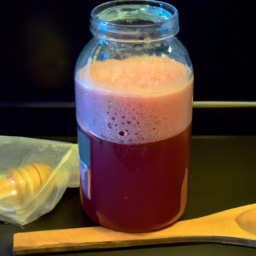
The act of fermentation transforms basic juice into a tasty and beneficial beverage, piquing the interest of numerous individuals. As a passionate home brewer, I have explored the fermentation of various fruits and vegetables and can attest to the many benefits that this traditional technique offers.
Fermented juice is not only packed with probiotics and enzymes that support gut health and digestion, but it can also be a refreshing and flavorful alternative to sugary sodas and juices.
In this article, I will guide you through the process of fermenting juice step by step, from selecting the right equipment to trying out delicious recipes. Whether you are a seasoned fermenter or a curious beginner, you will learn everything you need to know to create your own fermented juice at home.
So let’s get started and explore the fascinating world of juice fermentation!
Key Takeaways
- The fermentation process converts sugars into alcohol, carbon dioxide, and other compounds, which improves taste, shelf life, and health benefits of the juice.
- Proper maintenance and cleaning of equipment and materials, temperature control and monitoring, and starter culture are necessary for successful fermentation.
- Choosing high-quality, fresh juice without additives or preservatives, experimenting with flavor pairings, and straining the juice to remove pulp or seeds are important steps in making fermented juice.
- Regular consumption of fermented juice is recommended, as it is packed with probiotics that improve gut health and boost the immune system. Safe fermentation practices are crucial for optimal results.
Understanding the Fermentation Process
Now that you’ve got your juice ready, let’s talk about how you can turn it into a delicious fermented drink!
Fermentation is a scientific process that converts sugars into alcohol, carbon dioxide, and other compounds. It is a natural process that can happen spontaneously, but controlling the conditions of fermentation can improve the taste, shelf life, and health benefits of the final product.
Fermentation benefits are not limited to creating an alcoholic beverage. Fermented drinks have been shown to have numerous health benefits, including improved digestion, increased immune function, and reduced inflammation.
The science behind fermentation involves microorganisms, such as yeast or bacteria, breaking down the sugars in the juice and producing alcohol and other compounds. The type of microorganism used, as well as the temperature and time of fermentation, can greatly affect the final taste and composition of the drink.
Now, let’s move on to the next step of choosing the right equipment for your fermentation process.
Choosing the Right Equipment
When selecting the appropriate gear, it’s important to consider the size of your batch and the length of time you plan to ferment. For smaller batches, a simple mason jar with a lid or airlock can suffice. However, for larger batches, a fermenting crock or stainless steel container may be necessary.
It’s also important to consider the material of the container, as certain metals can react with the acidic nature of the juice and affect the taste.
In addition to selecting the appropriate gear, it’s important to maintain and clean your equipment properly. This includes regularly sanitizing your containers, airlocks, and any other equipment used in the fermentation process.
Cost-effective options for equipment can include repurposed containers, such as glass jars or plastic buckets, or purchasing second-hand equipment. By properly maintaining your equipment and selecting the right gear for your batch, you can ensure a successful fermentation process.
As you move into the next section about selecting the right juice, it’s important to remember the impact that equipment and maintenance can have on the final product.
Selecting the Right Juice
To make the most delicious and flavorful fermented drink, you’ll want to choose a high-quality, fresh fruit or vegetable that you love. When selecting juice for fermentation, keep in mind the following tips:
-
Choose juice that is free of additives or preservatives, as these can inhibit the fermentation process.
-
Opt for juice that is not pasteurized, as this process kills off any natural yeasts present in the juice.
-
Consider using a mix of juices to create a unique flavor profile.
-
Experiment with different flavor pairings to find your perfect combination.
By carefully selecting your juice, you can create a drink that is both tasty and healthy. Once you’ve chosen your juice, it’s time to move onto preparing it for fermentation.
Preparing the Juice
Get the best flavor out of your selected fruit or vegetable by thoroughly cleaning it before squeezing the juice. This is an essential step in the juice fermentation process. If you use dirty or contaminated produce, your juice can spoil quickly, ruining all your hard work.
The best way to clean your produce is by rinsing it under cold water and scrubbing it gently with a soft brush. This removes any dirt, bacteria, or chemicals that may be on the surface.
Next, you need to prepare your juice for fermentation. Depending on the type of juice you’re using, you may need to blend different fruits and vegetables to get the right flavor profile. For example, if you’re making a green juice, you may want to blend kale, spinach, cucumber, and celery to create a balanced flavor. If you’re making a fruit juice, you may want to blend sweet fruits like apples, pears, and grapes with tart fruits like lemons or limes to create a delicious flavor combination.
Once you’ve blended your juice, make sure to strain it to remove any pulp or seeds. This will ensure that your fermentation process goes smoothly and that you end up with a clear, tasty drink.
Now that your juice is prepared, it’s time to add a starter culture to begin the fermentation process.
Adding a Starter Culture
As I introduce a starter culture into the juice, it’s like planting a seed that will bloom into a flavorful and fizzy drink.
There are various types of starter cultures that can be used to ferment juice, but the most popular ones are kefir grains, kombucha SCOBY, and wild yeasts. Kefir grains are lactic acid bacteria and yeast that create a thick and tangy drink. Kombucha SCOBY, on the other hand, is a symbiotic colony of bacteria and yeast that produces a slightly sour and effervescent beverage. Meanwhile, wild yeasts are naturally occurring microorganisms that can be found in the air, on fruits, and even on our skin. They can be unpredictable but can also yield unique and complex flavors.
One crucial factor in fermenting juice with a starter culture is temperature control. The ideal temperature range for most starter cultures is between 68-78°F (20-25°C). If the temperature is too low, the fermentation process may take longer, and the drink may not be as carbonated. On the other hand, if the temperature is too high, the bacteria and yeast may produce off-flavors or even die. It’s essential to monitor the temperature regularly, especially during the first few days of fermentation, when the microorganisms are most active.
As we move on to fermenting the juice, we need to shift our focus from introducing the starter culture to monitoring the fermentation process.
Fermenting the Juice
Now that we’ve added a starter culture to our juice, it’s time to move on to the next step: fermenting the juice.
Juice fermentation is a process that involves the natural breakdown of sugars in the juice by microorganisms, resulting in the production of alcohol, lactic acid, and carbon dioxide. This process not only improves the flavor of the juice but also increases its nutritional value.
One of the benefits of juice fermentation is that it can enhance the digestibility and bioavailability of nutrients in the juice. Fermentation breaks down complex carbohydrates and proteins, making them easier for the body to absorb. Additionally, fermented juice contains beneficial bacteria known as probiotics that can improve gut health and boost the immune system.
However, it’s essential to be careful during the fermentation process to avoid common mistakes that could lead to spoilage or contamination. The fermentation process can be unpredictable, and there are some common mistakes to avoid, such as using contaminated equipment, not properly sterilizing jars or bottles, or fermenting at the wrong temperature.
By following proper guidelines and being careful during the fermentation process, we can ensure that our juice turns out delicious and safe to consume.
As we move on to the next section about monitoring the fermentation process, it’s crucial to keep in mind that fermentation is an ongoing process that requires attention and care. By monitoring the progress of fermentation, we can ensure that our juice is fermenting correctly and avoid any potential issues that could arise during the process.
Monitoring the Fermentation Process
Keeping an eye on how our mixture is progressing is important during the fermentation process to ensure a delicious and safe end product. To monitor the fermentation process, we need to measure the acidity of the juice regularly. The acidity level will change during fermentation, and it’s essential to keep track of these changes to ensure that the juice doesn’t become too acidic or too sweet. We can use a pH meter or pH strips to measure the acidity level of the juice.
Ideally, we want the acidity to be between 3.5 and 4.5 pH. If the acidity level is too high, we can add calcium carbonate to reduce it. If the acidity level is too low, we can add more sugar to increase it.
Another critical aspect of monitoring the fermentation process is adjusting the sweetness of the juice. As the yeast consumes the sugar, the juice will become less sweet. However, we don’t want the juice to become too dry, as it will affect the taste of the final product.
To adjust the sweetness, we can add more sugar to the juice. It’s important to add the sugar in small amounts and to test the sweetness regularly. We can use a refractometer to measure the sugar level of the juice.
Once the acidity and sweetness levels are optimal, we can proceed to the next step of storing and aging the fermented juice.
Storing and Aging Fermented Juice
Once we’ve achieved the optimal acidity and sweetness levels, it’s time to store and age our deliciously fermented beverage. Long term storage is essential to further develop the flavor of our juice. This process may take weeks or even months, depending on the desired taste. We can store our fermented juice in glass bottles or jars, making sure to leave some headspace to allow for carbonation. It’s important to keep the bottles or jars in a cool, dark place to prevent any further fermentation.
During the aging process, the flavor of our fermented juice will continue to develop. In fact, we can even create different flavor profiles by experimenting with different storage methods. I’ve found that using oak or other wood barrels can add a unique depth of flavor to the juice. To further emphasize the importance of long term storage, here’s a table to show the effects of aging on flavor development:
| Time Stored | Flavor Development |
|---|---|
| 1 week | Mildly tangy |
| 1 month | Tangy and slightly sweet |
| 3 months | Tart and fruity |
| 6 months | Complex and full-bodied |
Now that we’ve covered the storage and aging of our fermented juice, we can move on to trying out delicious fermented juice recipes.
Trying Out Delicious Fermented Juice Recipes
Who wouldn’t want to dive into some lip-smacking fermented beverage recipes that’ll make your taste buds dance?
Here are some flavor combinations to try out:
-
Classic Apple Ginger: Mix apple juice with freshly grated ginger and add some honey for sweetness. Let it ferment for 2-3 days and enjoy a zesty, refreshing drink.
-
Blueberry Lemonade: Combine blueberry juice with lemon juice and a pinch of salt. Let it ferment for 1-2 days and serve over ice for a tangy and fruity twist on traditional lemonade.
When it comes to serving suggestions, you can get creative and experiment with different garnishes like fresh herbs, sliced fruits, or even edible flowers.
These fermented juice recipes are not only delicious but also good for your gut health.
So, let’s move on to the next section and learn about the health benefits of fermented juice.
Enjoying the Health Benefits of Fermented Juice
To fully reap the health benefits of fermented juice, you should consume it regularly. Fermented juice is packed with probiotics, which are live microorganisms that provide numerous health benefits. These include improving gut health, boosting the immune system, and even reducing the risk of certain diseases. Probiotics work by restoring the natural balance of bacteria in the gut, which is essential for overall health and wellbeing.
Exploring flavor combinations is also a fun way to enjoy the health benefits of fermented juice. Some popular flavors include ginger, turmeric, and citrus fruits like lemons and limes. You can also experiment with different fruits and herbs to create your own unique flavor combinations. Just be sure to use fresh, high-quality ingredients and follow safe fermentation practices to ensure the best results. With the right ingredients and techniques, you can enjoy the delicious taste and health benefits of fermented juice in no time.
Frequently Asked Questions
Can you ferment juice without a starter culture?
Why use a starter culture when fermenting juice? While it can provide consistency, experimenting with different juice blends can lead to unique flavors and beneficial bacteria. However, without a starter culture, there is a higher risk of spoilage and inconsistent results.
How long does it take for juice to ferment?
Fermentation time for juice varies based on factors such as fermentation temperature, sugar content, and presence of yeast or bacteria. Generally, it takes 1-2 weeks for juice to ferment, but this can be longer or shorter depending on these variables.
Can you ferment juice in a plastic container?
Fermenting juice in a plastic container is doable, but glass containers have advantages. They’re more durable and don’t leach chemicals. For successful fermentation in plastic, sanitize it first and keep it in a cool place.
Is it necessary to use organic juice for fermentation?
Using organic juice for fermentation offers the benefits of higher nutrient content and absence of harmful pesticides. Alternatives include non-organic juice, but may contain fewer nutrients and chemicals. Consider using organic for optimal results.
Can you use frozen juice for fermentation?
Yes, frozen juice can be used for fermentation. While fresh juice may produce slightly better results, freezing preserves nutrients and extends shelf life. Benefits of freezing include easier storage and availability.
Conclusion
In conclusion, fermenting juice is a simple and rewarding process that can yield delicious and nutritious beverages. It’s important to understand the fermentation process, choose the right equipment, select the right juice, and prepare it properly. Adding a starter culture and monitoring the fermentation process are also crucial steps to ensure successful fermentation.
One interesting statistic to note is that fermented juices have been consumed for thousands of years and are still popular today. In fact, a recent study found that fermented beverages accounted for a significant portion of global beverage sales, with kombucha alone generating over $1 billion in revenue in 2019. This shows the growing popularity and interest in fermented beverages and highlights the potential for experimentation and innovation in the field of fermented juice.
By following the steps outlined in this article and trying out some of the delicious fermented juice recipes provided, you can enjoy the health benefits and unique flavors of fermented juice. From boosting gut health to providing a natural source of probiotics, fermented juice is a great addition to any healthy lifestyle. So, go ahead and give it a try – your taste buds (and gut) will thank you!
Ilana has been a vegan for over 10 years. She originally made the switch for health reasons, but soon found herself becoming more and more passionate about the ethical and environmental implications of a vegan lifestyle. Ilana is the author of The Graceful Kitchen, a blog all about veganism. She loves to cook up delicious and nutritious vegan meals, and share her recipes with others who are interested in leading a cruelty-free life. Ilana is also a strong advocate for using whole foods as the foundation of a healthy diet, and believes that going vegan is one of the best ways to achieve this.
Juice
How Much Juice Is In One Orange

I am fascinated by the amount of juice that can be extracted from an orange. As someone who enjoys beginning my day with a tall glass of freshly squeezed orange juice, I often contemplate the potential yield of each orange.
After all, the amount of juice in an orange can vary depending on a number of factors, from the variety of orange to the ripeness of the fruit. In this article, I’ll explore the importance of understanding orange juice yield, the factors that affect it, and some tips for maximizing the amount of juice you can extract from your oranges.
As it turns out, understanding orange juice yield is crucial if you want to get the most out of your juicing efforts. After all, if you’re using a lot of oranges but only getting a small amount of juice from each one, you’re not going to end up with a very satisfying glass of juice.
By understanding the factors that affect juice yield, you can choose the best oranges for juicing, use the right techniques to extract as much juice as possible, and even measure your yield to ensure you’re getting the most out of your efforts. So let’s dive in and explore just how much juice is in one orange.
Key Takeaways
- Choosing ripe and juicy oranges without bruises or soft spots is crucial for maximizing juice yield.
- Measuring orange juice yield accurately requires appropriate juicing equipment, straining, and a calibrated measuring cup.
- One cup of orange juice contains 112 calories, 22g sugar, and 124% of recommended daily intake of vitamin C.
- Incorporating orange juice into a balanced diet can boost the immune system, promote healthy skin, and add citrus flavor to cooking and baking.
The Importance of Understanding Orange Juice Yield
Understanding how much juice can be squeezed out of an orange is like discovering a hidden treasure within the fruit. Juice extraction is not only important for those who love to drink orange juice, but also for those who want to maximize the nutritional value of the fruit.
By knowing the yield of juice from an orange, you can adjust the amount of oranges needed to meet your daily vitamin C intake or to make a delicious glass of juice. The nutritional value of orange juice is well-known, as it contains essential vitamins and minerals that are good for the body.
However, the amount of juice yielded from an orange can vary depending on several factors, such as the variety of the orange, the ripeness of the fruit, and the extraction method used. These factors can affect the amount of juice that can be obtained from an orange, which is why it’s important to understand them before squeezing the fruit.
Factors That Affect Orange Juice Yield
When squeezing an orange, there are several factors that can affect how much juice you can yield. Firstly, the ripeness of the orange plays a significant role in its juice extraction. A riper orange will generally yield more juice than an unripe one.
Secondly, the size of the orange also matters in juice extraction. Larger oranges tend to have more juice content than smaller ones.
Thirdly, the juiciness of the orange, which can be determined by how easily the segments separate from one another, can also affect how much juice you can extract.
Finally, the method of juicing can also impact the yield of juice.
Factors affecting citrus juice extraction are critical to consider when juicing citrus fruits. Best practices for juicing include choosing ripe and juicy oranges, using a manual or electric juicer, and applying gentle pressure to extract the juice without crushing the seeds. It’s also crucial to avoid over-juicing the fruit, as this can lead to a bitter taste.
In the next section, I’ll discuss how to choose the best oranges for juicing.
How to Choose the Best Oranges for Juicing
To get the most out of your morning glass of OJ, it’s important to pick oranges that feel heavy for their size, like a dense little sun in your hand.
Choosing the right ripeness is also crucial. Oranges that are too ripe may be sweet, but they won’t yield as much juice as firmer ones. Look for oranges that are bright in color and have a slight give when squeezed.
Avoid oranges with bruises or soft spots, as these indicate damage that can affect flavor and juice yield.
Once you have your perfect oranges, it’s time to start juicing. But before you do, there are a few tricks for maximizing your orange juice yield.
Stay tuned for my tips on how to get the most juice out of your oranges without wasting a drop.
Tricks for Maximizing Your Orange Juice Yield
Get ready to squeeze every last drop of deliciousness out of your oranges with these juicing techniques for maximizing your OJ yield.
One of the easiest tricks is to roll your oranges before juicing. By doing so, you’ll be breaking down the membranes inside the fruit, allowing for an easier release of the juice.
Additionally, try microwaving your oranges for 15-20 seconds before juicing them. This will help to loosen up the juice and make it easier to extract.
If you don’t have a citrus press, don’t worry! There are still alternative methods for juicing your oranges. For example, you can use a fork to help you extract the juice. Simply slice your orange in half and then use the fork to poke and twist the fruit until all the juice is released.
Another option is to use a blender to puree your oranges and then strain the mixture to separate the juice from the pulp. With these tips, you’ll be able to extract as much juice as possible from your oranges, which is important to know when measuring orange juice yield.
Transitioning into the subsequent section, it’s important to note that measuring your orange juice yield is essential when following recipes or when tracking your daily intake. So, let’s dive into how to measure the amount of juice in one orange.
How to Measure Orange Juice Yield
Measuring your orange juice yield is a must-know for anyone who loves to cook or wants to track their daily citrus intake. To ensure measuring accuracy, there are a few factors to consider.
First, make sure to use a juicing equipment that is appropriate for the size of your orange. A smaller juicer might not be able to extract all the juice from a larger orange, resulting in an inaccurate measurement.
Next, be mindful of the amount of pulp and seeds in your juice. Straining your juice before measuring it is a good practice to ensure that you’re only measuring the liquid portion.
Lastly, use a measuring cup that is calibrated to the appropriate unit of measurement, such as ounces or milliliters. With these tips, you can ensure that you’re accurately measuring your orange juice yield every time.
When you know how much juice you’re getting from each orange, you can better plan your citrus intake and make sure you’re getting the right amount of nutrients. Drinking orange juice has numerous health benefits, from boosting your immune system to improving your skin health. So, let’s dive into the next section and learn more about the benefits of drinking orange juice.
Health Benefits of Drinking Orange Juice
You’re missing out on a world of vibrant health and a glowing complexion if you don’t indulge in a glass of fresh, zesty orange juice now and then. Orange juice is packed with essential nutrients such as vitamin C, potassium, folate, and thiamine. These nutrients are vital in maintaining a healthy immune system, reducing the risk of chronic diseases, and promoting healthy skin.
According to the United States Department of Agriculture, one cup of orange juice (237 ml) contains 112 calories, 22 grams of sugar, and 124% of the recommended daily intake of vitamin C. While orange juice is a healthy beverage choice, it’s important to consume it in moderation due to its high sugar content. The recommended daily intake of orange juice is one to two cups per day.
Incorporating orange juice into a balanced diet can provide numerous health benefits, but it’s important to consider the nutritional value and recommended intake to avoid consuming excessive amounts of sugar.
Transitioning into the subsequent section about other uses for orange juice, it’s important to note that orange juice doesn’t have to be consumed solely as a beverage. There are numerous other ways to incorporate orange juice into meals, such as using it as a marinade for chicken or fish, adding it to a smoothie, or using it as a base for salad dressings.
Other Uses for Orange Juice
I love using orange juice in my cooking and baking. It adds a bright and tangy flavor to dishes like chicken marinades and fruit salads.
Orange juice is also a great ingredient in cocktails, adding a refreshing twist to classic drinks like mimosas and screwdrivers.
Cooking and Baking
When I’m baking a cake, I always make sure to squeeze fresh orange juice for a burst of citrus flavor. Not only does it add a refreshing taste to the batter, but it can also help with the leavening process.
Juice extraction is fairly easy, all you need is a citrus juicer or simply use your hands to squeeze the juice out of the fruit. But don’t forget about the orange zest! The fragrant oils found in the orange peel can add depth to any baked good. Use a microplane to finely grate the zest and add it to your batter for an extra pop of flavor.
When it comes to cooking, orange juice can be used in a variety of ways. For savory dishes, it can be reduced and mixed with soy sauce, honey, and ginger to create a flavorful glaze for chicken or pork. But it’s not just limited to main dishes.
Add a splash of orange juice to your salad dressing or marinade for a refreshing twist. And if you’re feeling adventurous, try adding it to your homemade barbecue sauce for a tangy kick.
Now, onto cocktails…
Cocktails
If you’re looking to add a zesty twist to your next drink, try incorporating some freshly squeezed citrus into your cocktail mix. As a mixology enthusiast, I’ve found that adding orange juice to my cocktails can really enhance the flavors and give them a unique twist.
Here are some mixology tips and flavor pairings to consider when working with freshly squeezed orange juice:
- Use a citrus press to extract as much juice as possible from the orange.
- Use the juice immediately after squeezing to ensure maximum freshness and flavor.
- Experiment with different types of oranges, such as blood oranges or mandarins, for unique flavor profiles.
- Balance the sweetness of the orange juice with other ingredients, such as bitter or sour flavors.
- Use fresh garnishes, such as orange twists or slices, to add an extra pop of citrus to your cocktail.
Flavor Pairings:
- Orange juice pairs well with vodka, gin, and tequila.
- Try pairing orange juice with Campari or Aperol for a refreshing and bitter cocktail.
- Orange juice can also be used to balance out sweeter flavors, such as in a Mai Tai or Margarita.
When it comes to storing orange juice, it’s important to keep in mind that freshly squeezed juice has a short shelf life. To ensure that your orange juice doesn’t go bad, store it in an airtight container in the refrigerator and use it within a few days.
Storing Orange Juice
Storing orange juice properly ensures that the refreshing taste and nutrients are preserved. The best storage methods depend on the type of orange juice and the juicer used. Freshly squeezed orange juice can be stored in an airtight container in the refrigerator for up to three days. However, commercially produced orange juice can last up to two weeks in the refrigerator due to pasteurization.
Different types of orange juicers can also affect the shelf life of orange juice. For example, a centrifugal juicer produces a lot of heat and air, which can cause the orange juice to deteriorate faster. On the other hand, a masticating juicer operates at a lower speed and produces less heat and air, which results in a longer shelf life for the orange juice. It is essential to clean the juicer thoroughly before use to prevent bacterial growth, which can cause spoilage of the orange juice.
When it comes to storing orange juice, the right storage method can make a significant difference in taste and freshness. However, even if you store your orange juice properly, there are still common mistakes that can affect the quality of the juice.
Common Mistakes When Juicing Oranges
I’ve learned from experience that juicing oranges can be a tricky task. Over-squeezing the fruit can result in a bitter taste, while not rolling or warming the orange can lead to a lower juice yield. Using the wrong juicing method can also affect the quality of the juice.
Let’s dive into these common mistakes and how to avoid them for a better juicing experience.
Over-Squeezing
Beware of over-squeezing your orange, as this can result in a bitter taste due to the release of oils from the peel. When juicing an orange, it’s important to only apply enough pressure to extract the juice without overdoing it.
Here are some tips to avoid over-squeezing and ensure a delicious, refreshing glass of orange juice:
-
Use a citrus juicer: Using a juicer specifically designed for citrus fruits will help you avoid over-squeezing and ensure you get the most juice out of your oranges.
-
Roll the orange: Before juicing, roll the orange on a hard surface to help loosen the juice within the fruit.
-
Warm the orange: If the orange is cold, warming it up for a few seconds in the microwave or in warm water can help make it easier to extract the juice.
-
Avoid re-squeezing: Once you’ve juiced an orange, avoid squeezing it again as this can cause the release of bitter oils from the peel.
By following these tips for beginners, you can avoid wasting oranges and ensure that your orange juice tastes fresh and delicious. That being said, it’s not just about avoiding over-squeezing – there are other factors to consider when juicing oranges, such as not rolling or warming the orange too much.
Not Rolling or Warming the Orange
Make sure you roll and warm your oranges before juicing them, as this is a crucial step to getting the most out of your citrus fruits. Rolling the orange on a hard surface before juicing helps to break up the fruit’s internal membranes, making it easier to extract the juice.
Warming the orange beforehand also helps to loosen the juice and make it flow more freely. If you skip these steps, you may be missing out on a significant amount of juice and flavor, and risking wasting a perfectly good orange.
Avoiding waste is not only important for the sake of saving money, but also for the environment. By using proper juicing techniques, such as rolling and warming your oranges, you can extract the most juice possible and avoid throwing away any unused fruit.
Additionally, using the right juicing method is crucial to getting the most out of your oranges. In the next section, we’ll discuss how using the wrong juicing method can also lead to a less flavorful and less nutritious juice.
Using the Wrong Juicing Method
Using the wrong juicing method can have a significant impact on the quality of the juice you get from an orange. Not only can it result in a lack of flavor, but it can also lead to a loss of essential nutrients. This is why it’s crucial to understand the correct juicing technique to get the most out of your oranges.
One common mistake people make when juicing oranges is not removing the pith or white membrane that lines the fruit’s inside. This can make the juice bitter and less enjoyable to drink. Additionally, some people may use a juicer that’s not designed for citrus fruits, which can also result in a subpar juice. To help you better understand the impact of incorrect juicing techniques, take a look at the table below:
| Juicing Technique | Impact on Juice Quality |
|---|---|
| Not removing pith | Bitter taste |
| Using wrong juicer | Loss of nutrients |
By avoiding these common mistakes and using the proper juicing techniques, you can enjoy a delicious and nutrient-rich glass of orange juice. Remember to always remove the pith and use a citrus juicer for the best results.
Frequently Asked Questions
What is the nutritional value of an orange?
As someone who values their health, I can attest to the numerous benefits of oranges. They are packed with vitamin C, fiber, and antioxidants. Plus, they make for delicious juice recipes that can easily be incorporated into your daily routine.
How long does it take to juice an orange?
I can juice an orange in about a minute using a handheld juicer. Juicing techniques and orange juice extraction methods vary and can affect the time it takes. However, the amount of juice extracted is not related to the time it takes to juice the orange.
Can you use a blender instead of a juicer to make orange juice?
I used to think blending oranges would suffice, but I learned the hard way. A juicer extracts more nutrients and juice, while a blender leaves behind pulp, fiber, and antioxidants. Whole oranges are healthier, but juicing is great for convenience.
Are there any alternative ways to extract juice from an orange?
There are alternative ways to extract juice from an orange besides using a juicing machine. Hand squeezing is a common method, but it may not yield as much juice. Other options include using a citrus press or a reamer.
How does the type of orange affect the juice yield?
Different orange varieties have varying juice yields due to differences in their acidity, sweetness, and pulp content. Juice extraction techniques, such as hand squeezing or using a juicer, can also affect the amount of juice obtained.
Conclusion
Well, folks, it looks like we’ve come to the end of our journey through the world of orange juice yield.
Through our exploration, we’ve learned that there are a multitude of factors that can impact how much juice you can extract from an orange, from the ripeness of the fruit to the techniques you use for juicing.
But fear not, for armed with the knowledge we’ve gained, we can now approach our juicing endeavors with a newfound confidence and skill.
So go forth, my friends, and squeeze those oranges! May your yields be bountiful and your juice be sweet as sunshine on a summer day.
Ilana has been a vegan for over 10 years. She originally made the switch for health reasons, but soon found herself becoming more and more passionate about the ethical and environmental implications of a vegan lifestyle. Ilana is the author of The Graceful Kitchen, a blog all about veganism. She loves to cook up delicious and nutritious vegan meals, and share her recipes with others who are interested in leading a cruelty-free life. Ilana is also a strong advocate for using whole foods as the foundation of a healthy diet, and believes that going vegan is one of the best ways to achieve this.
Juice
How Does Shrimp Cook In Lime Juice
Cooking shrimp with lime juice is like watching an intriguing chemical reaction unfold right in front of you. The lime juice interacts with the proteins in the shrimp, altering their texture and flavor, ultimately creating a mouthwatering dish that is both tangy and rich in taste.
In this article, I will dive deep into the science behind the process, exploring the chemical reactions that occur when shrimp is marinated in lime juice and examining the benefits of this cooking technique. As a food enthusiast, I have always been fascinated by the different ways in which ingredients can be combined to create delicious dishes. However, the idea of cooking shrimp in lime juice was relatively new to me until I tried it myself.
The results were nothing short of spectacular, and I was eager to learn more about the science behind the process. Through my research, I discovered that the acidity in lime juice breaks down the proteins in the shrimp, effectively cooking them without the need for heat. This not only results in a tender and flavorful dish, but also provides several health benefits.
In this article, I will share my findings on the topic, exploring the regional variations, choosing the right shrimp, and safety precautions to take when cooking with lime juice.
Key Takeaways
- Lime juice breaks down proteins in shrimp, resulting in a similar effect to cooking with heat but without added fat.
- Regional variations of shrimp cooked in lime juice exist, such as ceviche in Latin America, and lime-marinated shrimp is versatile and pairs well with complementary ingredients.
- Choosing fresh, sustainably harvested shrimp and properly cleaning and preparing them is crucial for taste and texture.
- Safety precautions, such as washing hands and using separate cutting boards and utensils for raw seafood, should be taken when handling and preparing shrimp cooked in lime juice.
Understanding the Chemical Reaction
You’re gonna love how the lime juice reacts with the shrimp, making it tender and flavorful. There’s actually a scientific explanation for this.
When lime juice comes in contact with shrimp, it triggers a chemical reaction that causes the proteins in the shrimp to break down. This is due to the chemical properties of the lime juice, which is high in citric acid.
The enzymatic breakdown of the proteins in the shrimp results in a change of texture and flavor. The shrimp becomes more tender and easier to chew, while the lime juice imparts a tangy and slightly sweet taste.
This process is commonly known as ‘cooking’the shrimp in lime juice, although technically it’s not the same as applying heat to the shrimp. Instead, the lime juice breaks down the proteins in a way that mimics the effects of cooking.
This is just one of the many benefits of using lime juice as a marinade for shrimp.
Benefits of Lime Juice Marination
I want to talk about the benefits of marinating shrimp in lime juice.
Firstly, there’s no need for heat when marinating with lime juice, making it a simple and easy method for cooking shrimp.
Secondly, the bright and tangy flavor of the lime juice adds a refreshing taste to the shrimp.
Lastly, lime juice pairs well with a variety of other ingredients, making it a versatile ingredient in many different dishes.
No Need for Heat
Surprisingly, shrimp can be transformed into a mouthwatering dish without ever touching a stove or oven when marinated in lime juice. The raw shrimp texture is altered by the acidic marinade, which ‘cooks’ the shrimp by denaturing the proteins.
The shrimp becomes opaque and firm, with a slightly chewy texture that is similar to cooked shrimp. Not only is this method of cooking shrimp incredibly easy, it’s also healthier than traditional cooking methods because it doesn’t require any added oil or fat.
Plus, the bright and tangy flavor of the lime juice complements the natural sweetness of the shrimp, making for a delicious and refreshing dish. So next time you’re craving shrimp, try marinating it in lime juice for a quick, easy, and delicious meal.
Bright and Tangy Flavor
Indulge in the bright and tangy flavors of a lime juice marinade for a shrimp dish that’s both refreshing and delicious.
When shrimp is marinated in lime juice, the acid in the juice gently cooks the shrimp, giving it a unique texture and flavor profile. The tangy lime flavor pairs perfectly with the sweetness of the shrimp, creating a flavor explosion in your mouth.
To make a lime juice marinade, simply combine freshly squeezed lime juice, garlic, salt, and pepper in a bowl. Add the shrimp and let it sit in the marinade for at least 15 minutes.
Once the shrimp has been marinated, it can be cooked in a variety of ways, including grilling or sautéing. This versatile marinade can also be used with other seafood or even chicken for a delicious and healthy meal.
Moving on to the next section, pairing the shrimp with other ingredients can take this dish to the next level.
Pairing with Other Ingredients
Enhance the flavor of your lime-marinated shrimp dish by pairing it with complementary ingredients such as avocado, cilantro, and cherry tomatoes. These flavor combinations will elevate the taste of your dish and give it a unique twist.
Avocado adds creaminess and richness, cilantro brings a fresh and herbaceous flavor, and cherry tomatoes provide a burst of sweetness. These ingredients not only complement the bright and tangy flavor of the lime-marinated shrimp but also create a well-balanced dish that will satisfy your taste buds.
Apart from flavor combinations, cooking techniques also play a crucial role in enhancing the taste of your dish. Grilling or sautéing the shrimp with a little bit of olive oil and seasoning will add depth and complexity to the dish. The caramelization from grilling or sautéing will intensify the flavors and create a mouth-watering experience.
These techniques also make the shrimp tender and juicy, making it the perfect protein for your lime-marinated shrimp dish. With the right pairing of ingredients and cooking techniques, your shrimp dish will be a crowd-pleaser.
As we explore regional variations of this dish, we’ll discover new ways to cook and pair ingredients that will take your lime-marinated shrimp dish to the next level.
Regional Variations
Although there are regional variations, the classic method of cooking shrimp in lime juice is popular throughout Latin America. In Mexico, for example, ceviche is often made with serrano or habanero peppers for a spicy kick. In Peru, the dish is typically served with sweet potato and corn, while in Ecuador, it may include tomato and cilantro.
The cultural significance of ceviche cannot be overstated, as it’s often served as a symbol of national pride and identity.
When cooking shrimp in lime juice, it’s important to choose the right type of shrimp. Look for fresh, high-quality shrimp that have been sustainably harvested. Avoid shrimp that has been previously frozen or treated with preservatives.
Additionally, make sure to remove the shrimp’s digestive tract (the dark vein) before cooking, as it can affect the taste and texture of the dish.
With the right ingredients and technique, cooking shrimp in lime juice can be a delicious and satisfying culinary experience.
Choosing the Right Shrimp
As we’ve seen in the previous subtopic, the way shrimp ceviche is prepared varies greatly depending on the region. However, something that remains constant is the importance of choosing the right shrimp. When it comes to making shrimp ceviche, freshness and quality are key.
To ensure you’re getting the best shrimp for your ceviche, here are a few things to keep in mind:
- Look for wild-caught shrimp instead of farmed shrimp, as this can help with sustainability concerns.
- Choose shrimp that are firm and have a slight sheen to them, avoiding any shrimp that smell fishy or have a slimy texture.
- Consider the size of the shrimp you’re buying, as larger shrimp may take longer to cook.
- If possible, buy shrimp that are already deveined to save time during preparation.
- Finally, consider the price – while you don’t necessarily need to buy the most expensive shrimp, you don’t want to skimp either.
Once you have the perfect shrimp for your ceviche, it’s time to move on to the cooking methods.
To prepare shrimp ceviche, there are a few different methods you can use. Some people prefer to simply marinate the shrimp in lime juice until they turn opaque, while others prefer to boil the shrimp briefly before marinating them. Regardless of the method you choose, it’s important to make sure the shrimp are fully cooked before serving.
With the right preparation and cooking, you can create a delicious and refreshing shrimp ceviche that’s sure to be a hit.
Preparing the Shrimp
To get started on preparing your shrimp for ceviche, it’s important to choose fresh, high-quality wild-caught shrimp that are firm and have a slight sheen.
Once you have your shrimp, you’ll need to clean them and remove the shell. To do this, start by holding the shrimp by the tail and gently pulling off the shell. You can also use a paring knife to slit the back of the shrimp and remove the vein. Rinse the shrimp under cold water to remove any remaining debris.
When it comes to choosing the right size of shrimp for ceviche, it’s really a matter of personal preference. Some people prefer small, bite-sized shrimp, while others like the texture and flavor of jumbo shrimp.
Keep in mind that smaller shrimp will cook faster in the lime juice, but larger shrimp will be more substantial in the finished dish.
Once your shrimp are cleaned and ready to go, it’s time to move on to marinating them in lime juice.
Marinating the Shrimp
Now that the shrimp’s prepared, it’s time to marinate them in lime juice. This step is crucial as it infuses the shrimp with tangy flavor while tenderizing the meat.
To marinate the shrimp, I prefer using a large plastic ziplock bag. I add shrimp and enough lime juice to coat all pieces. Then, I seal the bag and leave it in the fridge for at least 30 minutes.
When it comes to grilling the shrimp, there are a few techniques to keep in mind. Firstly, make sure to oil the grill grates to prevent sticking. Secondly, preheat the grill to high heat before adding the shrimp. Finally, grill the shrimp for about 2-3 minutes on each side until they turn pink and slightly charred. If you don’t have access to a grill, you can also cook the shrimp in a hot skillet with some oil.
For those who may not enjoy the taste of lime or want to try something new, there are alternative citrus options. Lemon and orange juice can also be used to marinate the shrimp, providing a slightly different flavor profile. Additionally, adding some chopped garlic or cilantro to the marinade can add a delicious twist to the dish.
As the shrimp finishes cooking, it’s time to start thinking about serving suggestions.
Serving Suggestions
If you’re looking to add a pop of color to your plate, consider garnishing your grilled shrimp with a sprinkle of chopped fresh herbs, like confetti on a party dress. Not only does it add visual interest, but it also enhances the flavor of the dish.
Here are some flavor combinations and presentation ideas to take your shrimp to the next level:
-
Flavor combinations:
-
Lemon and dill
-
Lime and cilantro
-
Garlic and parsley
-
Presentation ideas:
-
Serve on a bed of mixed greens for a salad
-
Skewer with pineapple and bell pepper for a tropical twist
-
Arrange on a platter with sliced avocado and cherry tomatoes for a colorful appetizer
By incorporating these ideas, you can elevate your shrimp dish and impress your guests.
Now, let’s move on to the important topic of safety precautions.
Safety Precautions
Before you start cooking shrimp in lime juice, it’s essential to take note of some safety precautions to ensure that you don’t encounter any unwanted accidents.
Firstly, when handling raw shrimp, it’s crucial to wash your hands thoroughly with soap and water. This step is especially important as raw shrimp may contain bacteria that can cause food poisoning.
Additionally, it’s recommended to use separate cutting boards and utensils for raw seafood and other food items to prevent cross-contamination.
When it comes to storing shrimp, it’s best to keep them refrigerated until ready to use. Raw shrimp can be stored in the refrigerator for up to two days, while cooked shrimp can last for up to four days.
It’s also essential to keep shrimp at a temperature of 40°F or below to prevent the growth of harmful bacteria. If you plan on freezing shrimp, make sure to place them in an airtight container and label it with the date of freezing.
Frozen shrimp can last for up to six months in the freezer. By following these handling tips and storage guidelines, you can ensure that your shrimp dish is not only delicious but also safe to eat.
Frequently Asked Questions
Can I use lemon juice instead of lime juice to cook shrimp?
I wouldn’t recommend using lemon juice instead of lime juice to cook shrimp. Lime juice offers many benefits, such as a higher acidity level and unique flavor profile, which enhances the taste and texture of the shrimp.
How long should I marinate the shrimp in lime juice?
I marinate shrimp in lime juice for 30 minutes before cooking. Longer marinating times will increase flavor intensity but may result in a tougher texture. It’s important to not over-marinate.
Can I use frozen shrimp for this recipe?
Frozen shrimp can be used for this recipe, but it’s important to thaw them properly first. The cooking time may be slightly longer than with fresh shrimp, and the texture may be slightly different, but still delicious.
What other dishes can I make with lime-marinated shrimp?
I love making Grilled Shrimp Skewers and Shrimp Ceviche with lime-marinated shrimp. The tangy citrus flavor pairs perfectly with the shrimp’s sweetness. Both dishes are easy to prepare and perfect for summer gatherings.
How do I know when the shrimp is fully cooked?
To know when shrimp is fully cooked, I look for a change in texture from translucent to opaque and a slight curling. I prevent overcooking by timing it carefully and removing it from heat immediately.
Conclusion
In conclusion, I’ve discovered that cooking shrimp in lime juice isn’t just a delicious way to prepare this seafood favorite. It also has a fascinating chemical reaction that transforms the texture and flavor.
By marinating the shrimp in lime juice, the citric acid breaks down the proteins. This causes the shrimp to become opaque and firm, with a tangy, citrusy taste.
Furthermore, the benefits of lime juice marination aren’t limited to taste alone. Lime juice is also a rich source of vitamin C. This has antioxidant properties that can boost the immune system and protect against disease.
Whether you prefer your shrimp cooked in lime juice with a Caribbean or Latin American twist, or simply enjoy the zesty, refreshing taste, this dish is sure to be a hit at any seafood feast.
So next time you’re in the mood for some delicious shrimp, remember to reach for the lime juice and let the magic happen!
Aurelia is the Editor-in-Chief of The Graceful Kitchen, a vegan lifestyle blog that focuses on delicious, nutritious, and ethical eating. A lifelong vegan, Aurelia is passionate about sharing her love of plant-based cuisine with others. She is a regular contributor to several online and print publications, and has been interviewed by major news outlets about the benefits of a vegan diet. In her free time, Aurelia enjoys cooking, hiking, and spending time with her cats.
-
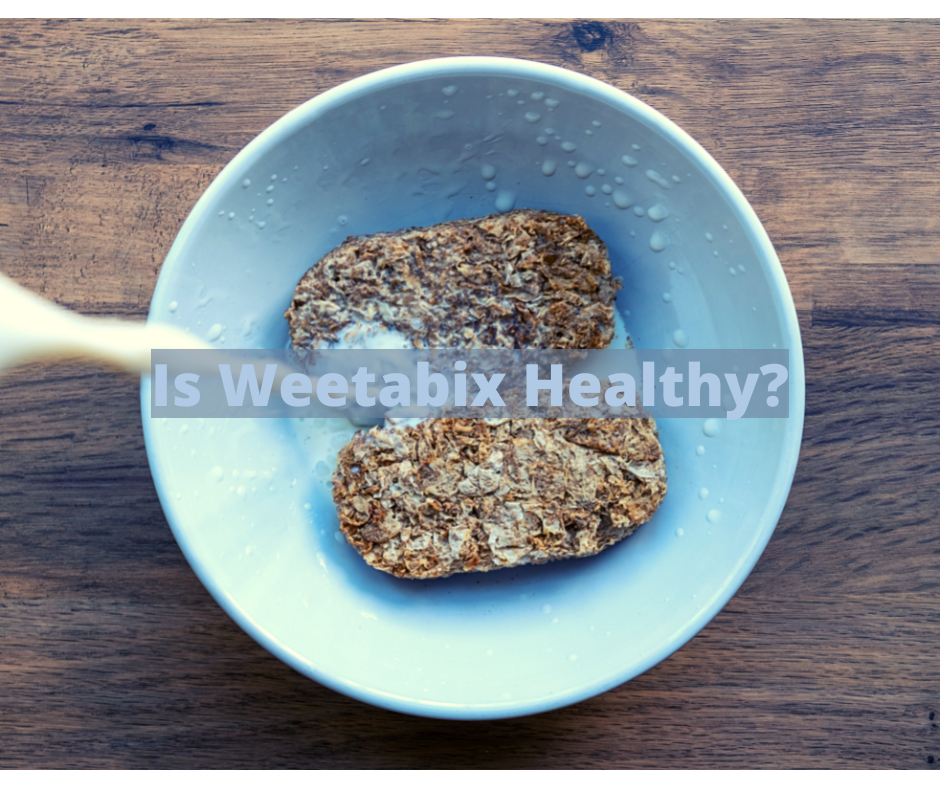
 Vegan3 months ago
Vegan3 months agoIs Weetabix Healthy? 14 Things You Should Know
-
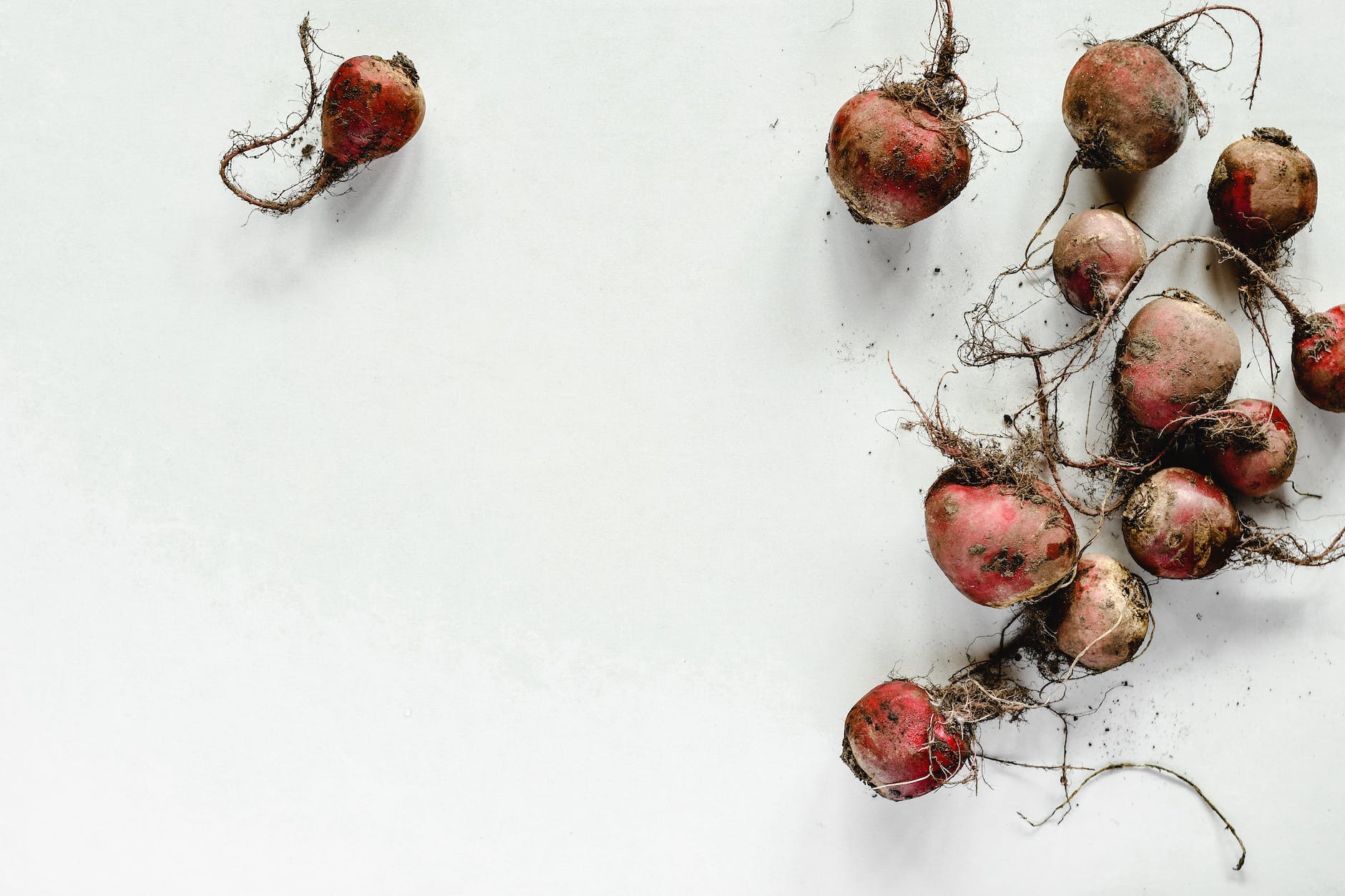
 Raw1 month ago
Raw1 month agoWhy Do Raw Beets Irritate My Throat?
-
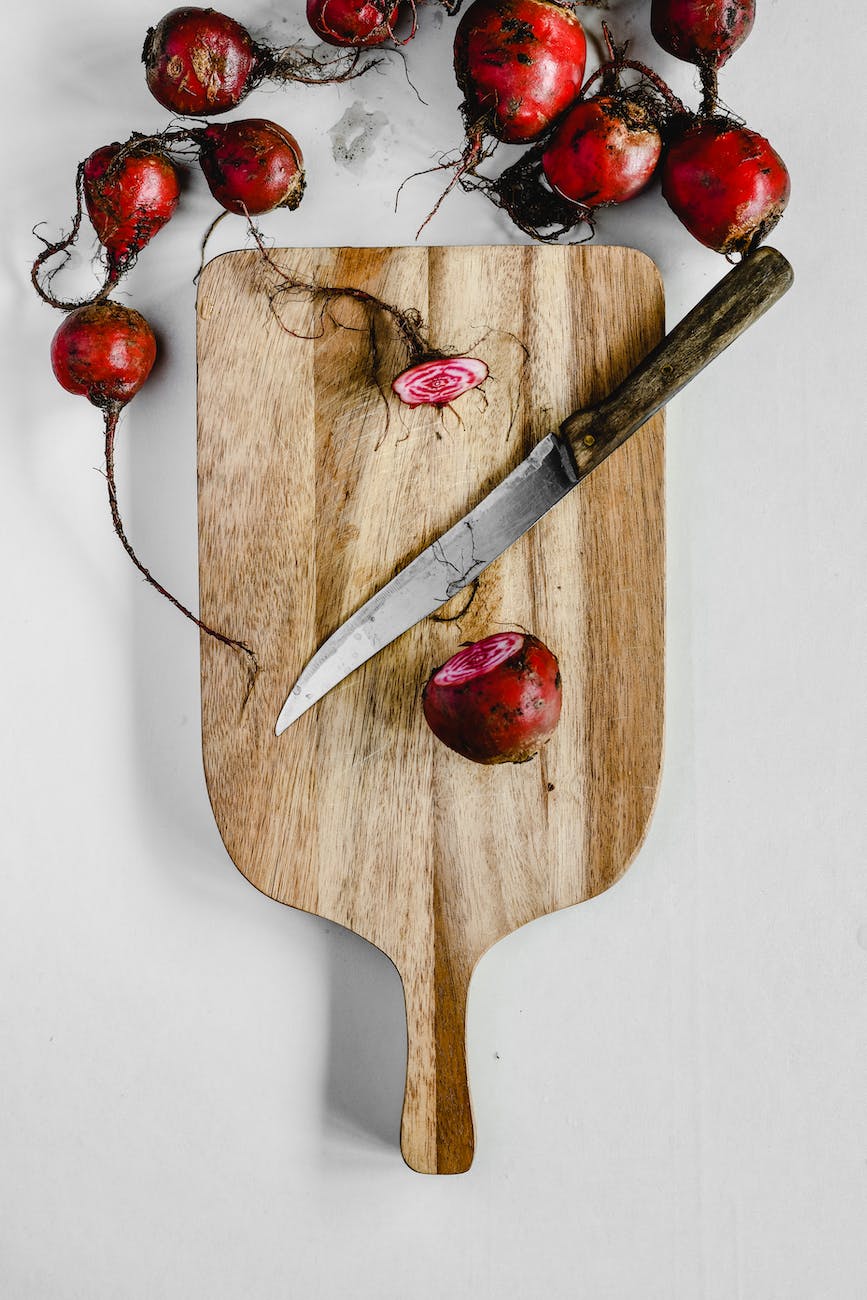
 Beginners Guides1 month ago
Beginners Guides1 month agoIf Beets Are Soft Are They Bad?
-

 Vegan3 months ago
Vegan3 months agoIs Gatorade Zero Healthy? 33 Things You Should Know
-
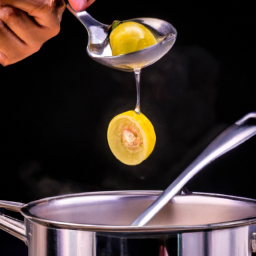
 Juice23 hours ago
Juice23 hours agoHow To Fix Too Much Lemon Juice In Soup
-
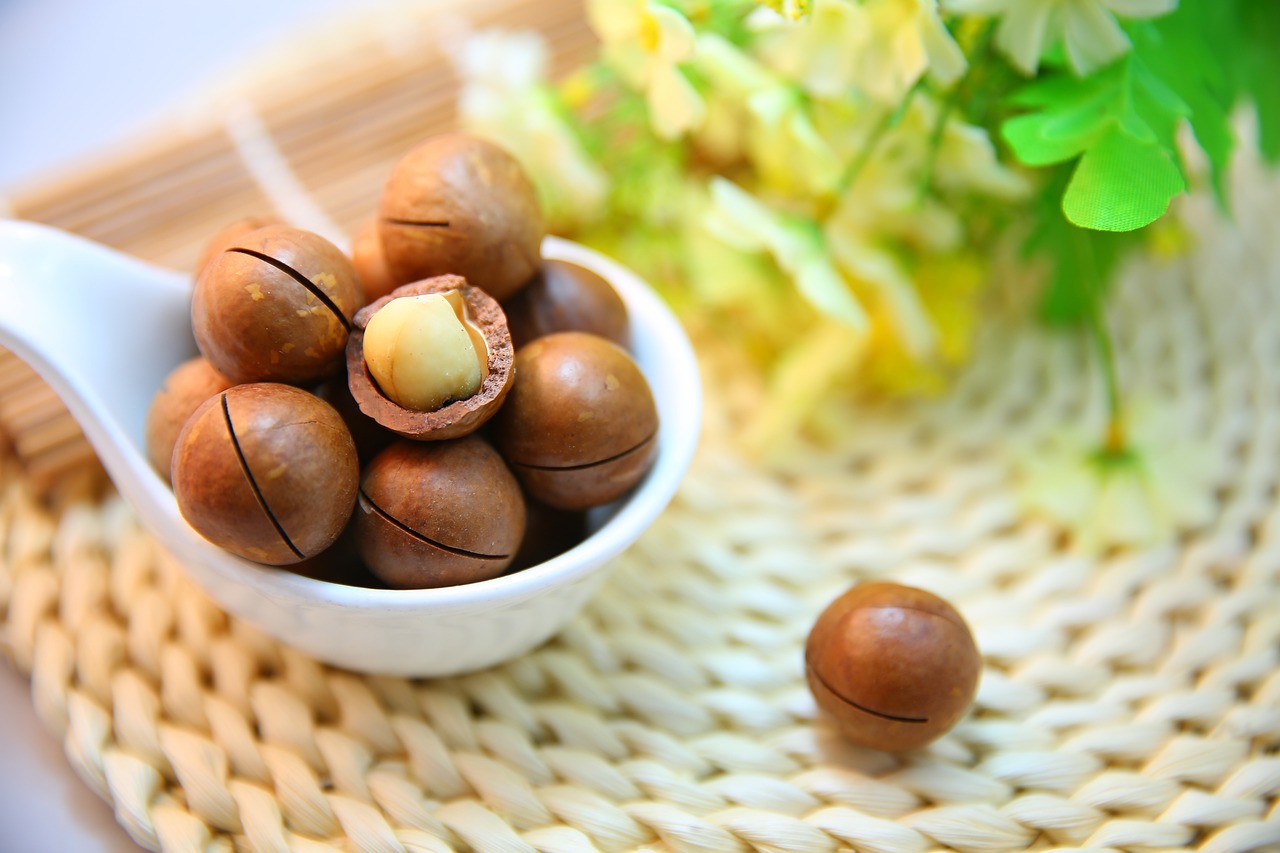
 Raw4 weeks ago
Raw4 weeks agoMacadamia Nuts – Which is Better Nutrition Raw Or Dry Roasted?
-

 Juice3 months ago
Juice3 months agoHow To Make Dmt Vape Juice
-
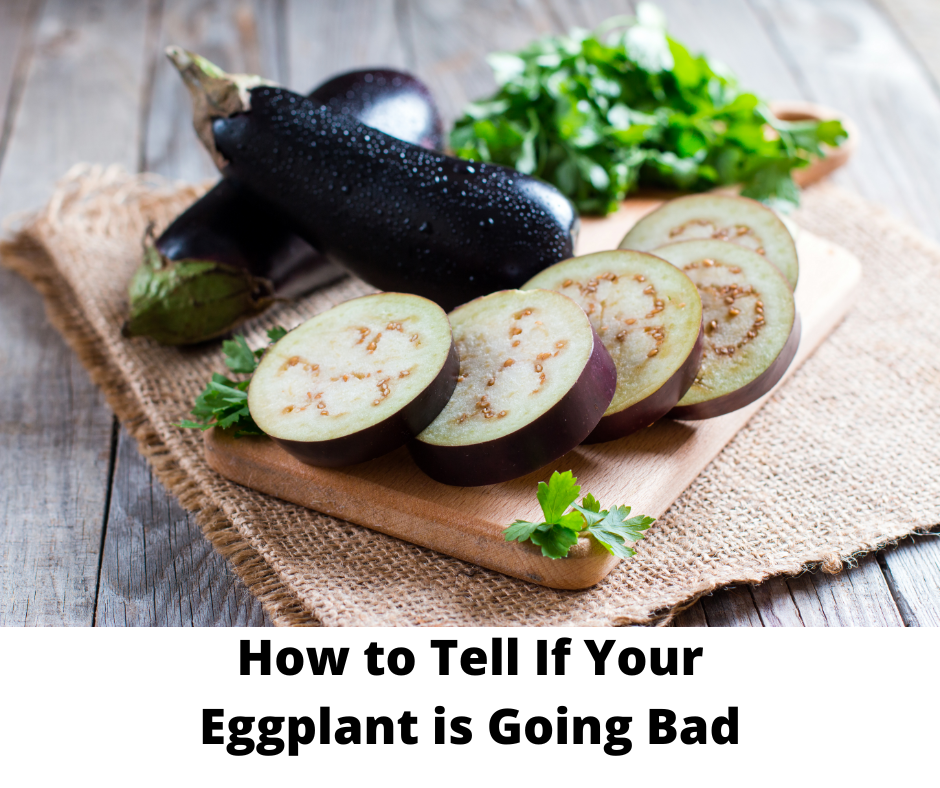
 Vegan3 months ago
Vegan3 months agoHow to Tell If Your Eggplant is Going Bad by Looking at the Color on the Inside




